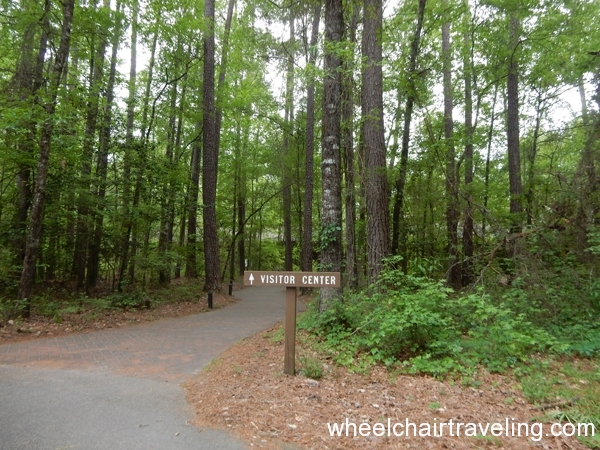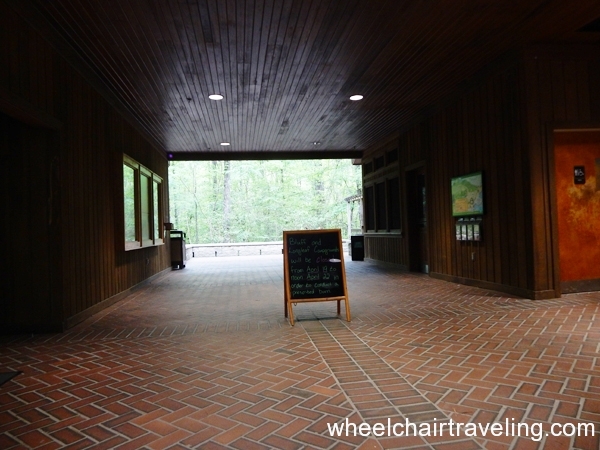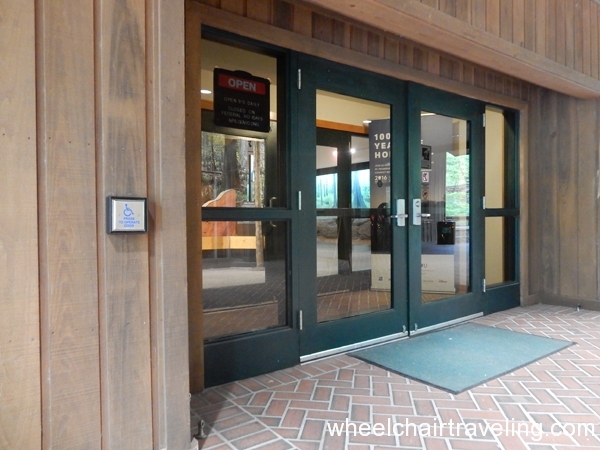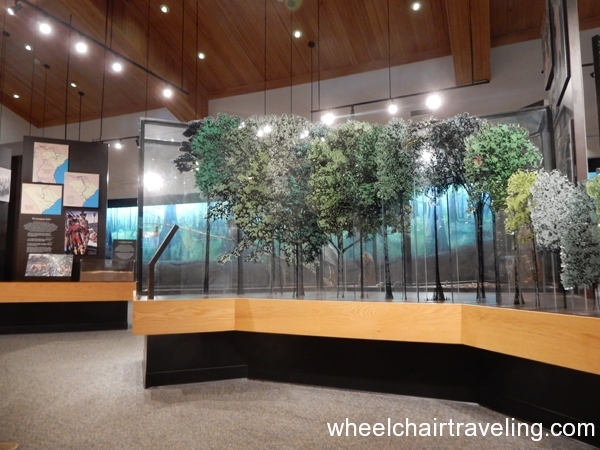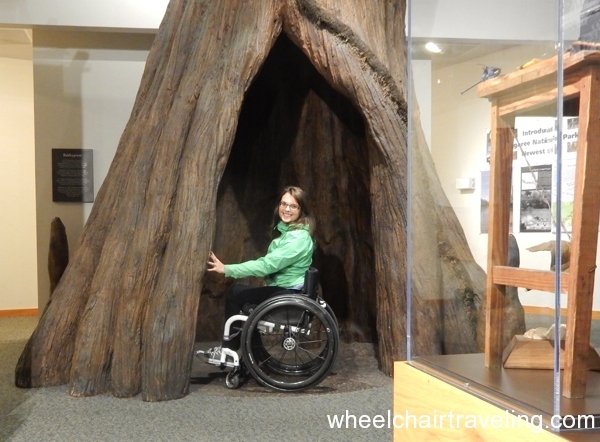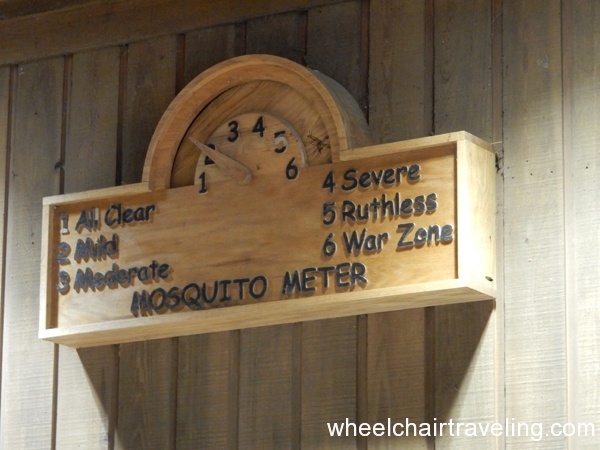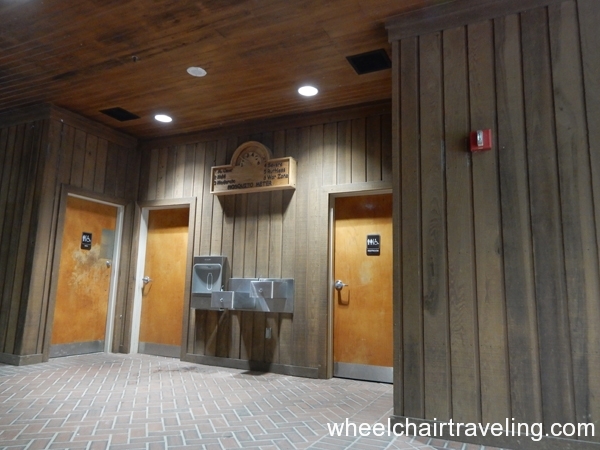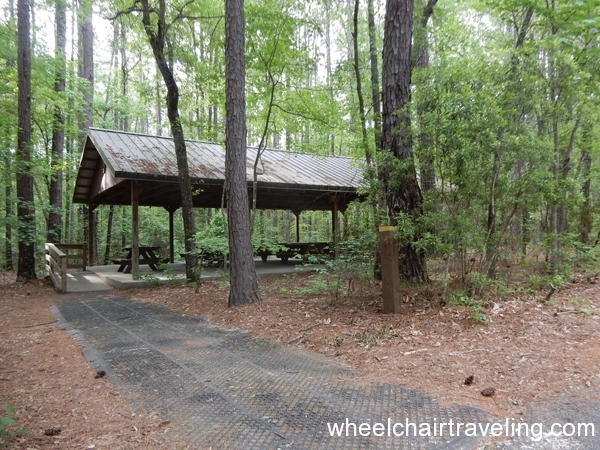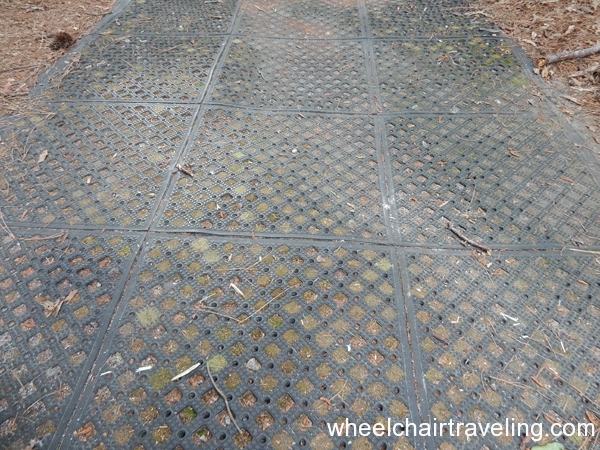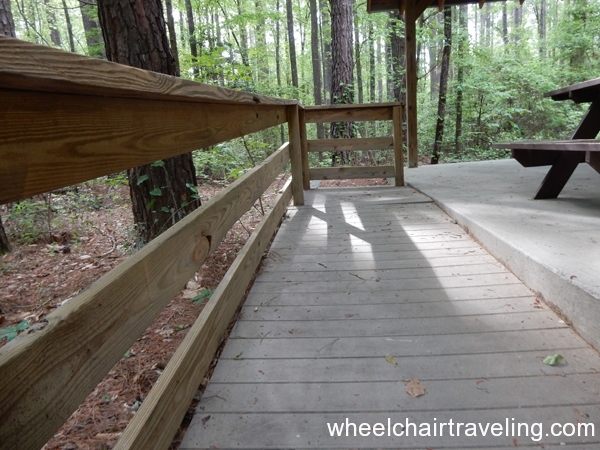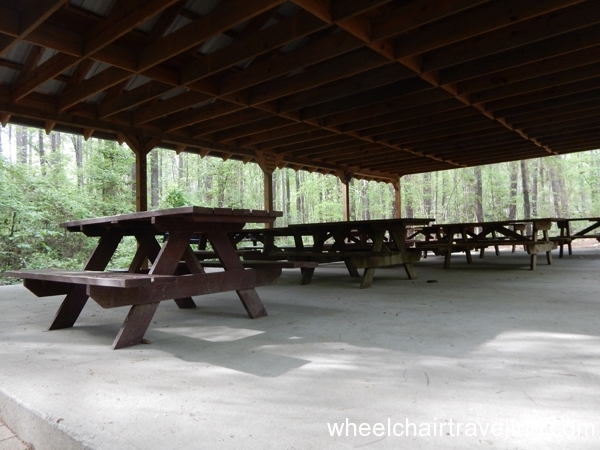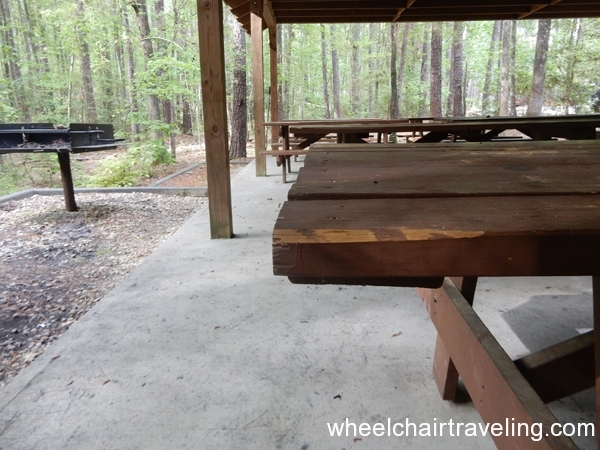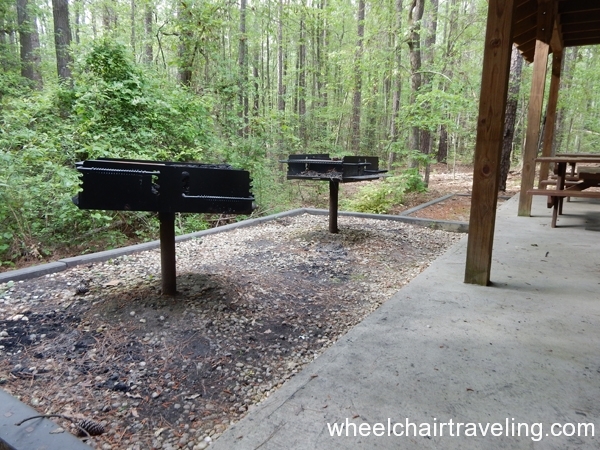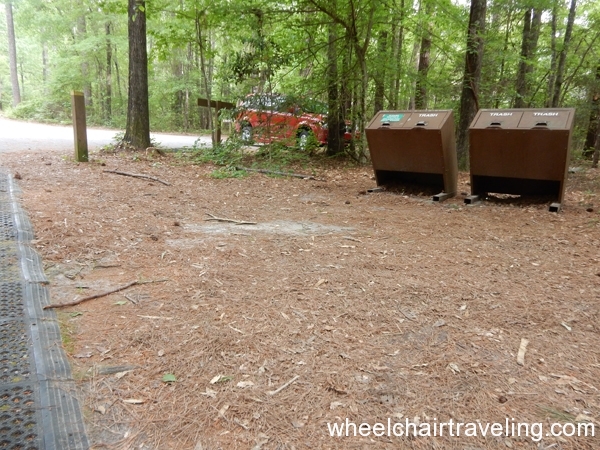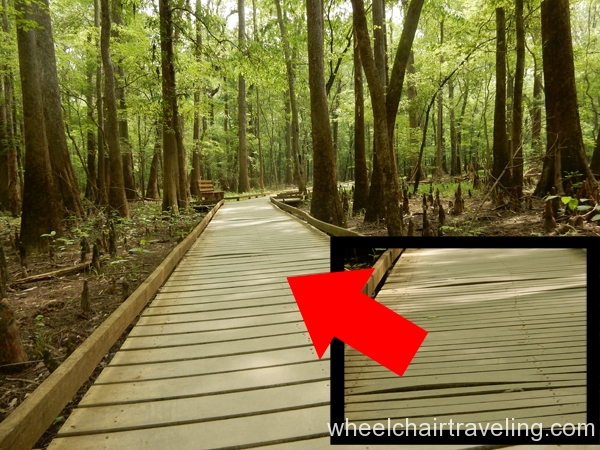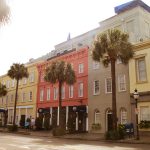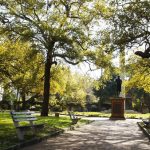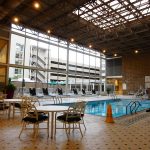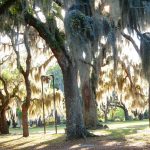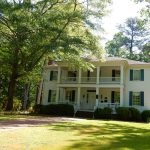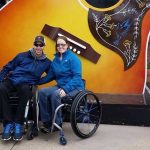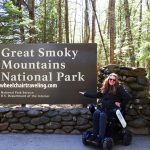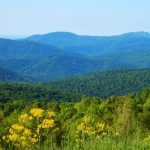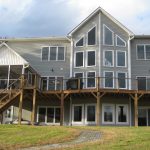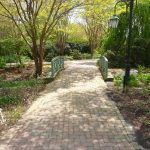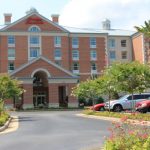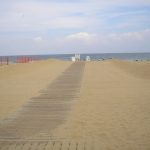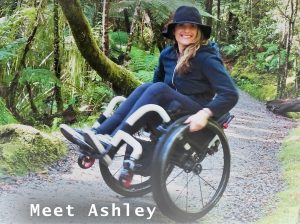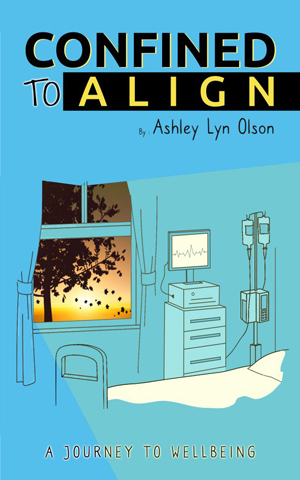Congaree National Park is located at the southern end of South Carolina, just outside the state capitol of Columbia. It is a preserved wildlife area, receiving the most government protection from mankind’s footprints. Part of the park’s border aligns with the Congaree River and acts as a floodplain before reaching the ocean. Wintertime brings the most severe flooding, but a portion of the park remains accessible to visitors.
The park is known to be swampland, and it is, with many plants and trees that have adapted to this environment and are thriving, but hardwood trees are also found in this forest. The forest at Congaree National Park is petty unique. This type of forest used to cover the entire Southeast United States and now there are only bits and pieces of it. The presence of the river, creeks, and oxbow lakes create a happy environment for aquatic wildlife like fish, amphibians, and reptiles. The broad-head skink was often spotted; birds were also commonly heard throughout the park and occasionally seen, including the pileated woodpecker.
What are those objects coming out of the ground? Tree knees! When strolling around the boardwalk trail you will see what looks to be a root of a tree sticking out of the water, which is called Cypress Knees. Scientists have been coming from around the world to study these specific structures and are baffled by their purpose. They cannot figure it out! They are not tree roots designed to provide oxygen or other nutrients to the tree. These knees are all over the forest with the largest one in the park being 10 feet tall. When I was there, I told the ranger that they looked like the homes of fairies, gnomes, or elves. He laughed and explained that if I were to come out at night then I would see the fungi glow—he wasn’t kidding. Forests are magical.
Harry Hampton Visitor Center
- Description: Inside you will first see the information desk with a lowered section for wheelchair access to ask questions. You can also purchase park merchandise, water, or some snacks. Colorful and informative exhibits are on display
- Entrance Fee:
- Automatic Doors: One button opens the set of the front, main doors.
- Parking and Pathway: 2 spots are located right at the main entrance where the picnic area is also located, and around the corner in the overflow parking lot, 2 additional spots are designated for access with a pathway that leads to the Visitor Center’s main entrance. The pathway to the main door is made up of smoothly-lined brick causing it to be a little bumpy, and there’s a small incline (about 3-4 degrees).
- Picnic Area: Includes a covered shelter with several picnic tables, with one or two that have extended ends, though access to them is not great due to placement. From the end of the parking lot, a rubber-matted walkway leads to the tables. Cooking grills are not accessible, and unless you can stand, the trash cans are also not accessible.
- Water: 2 accessible drinking fountains along with a water-bottle fill-up station are located right at the entrance (to the right of the main door, near the bathrooms).
- Bathrooms: Flush toilets are located just outside the visitor center main doors where you will find accessible men/women stalls plus a family unisex that is extra wide in between.
Outdoor Attractions
Boardwalk Loop Trail (2.4 miles)
- Description: This trail is the main attraction of this park, drawing visitors year-round to meander through the swamp and hardwood forest. It begins and ends at the backside of the Visitor Center. Several benches and turnout points are located along the boardwalk, which are also lovely places to squat and have a picnic. A portion of the trail is raised, so all visitors can enjoy the park even when most of the area is flooded.
- Grade and Cross-Slope: Most of the trail is level with a couple of 5-degree or less graded hills. Flooding has affected the cross-slope, an issue that is always being repaired. Occasionally, a board would be warped from water, causing it to bend, but there is enough time to prepare and adapt for it, and none were alarming—just something to be aware of.
- Makeup: 99% of the trail is a wooden boardwalk; the 1% is hard-packed natural earth that’s easy to roll on. For some, the barriers are the transitions, installing an additional piece at an angle to create a ramp is recommended.
Additional Trails
Several other trails are in the park, some directly off the boardwalk, with no access modifications but may still be possible for some hikers. The ground can be very firm, depending on the time of year, but the biggest barrier is the tree roots and water barges; sometimes you can go around but sometimes not so how far you can go is up to the hiker. Be a smart hiker, know your limits. The dog trail can only be accessed by passing a few stairs.
South Cedar Creek
Canoes and kayaks are most commonly launched at South Cedar. South Cedar Creek is the most accessible area to fish from. Fishing is permitted anywhere with a valid South Carolina license, except the Weston Lake Overlook or tail bridges.
Additional Travel Tips
- Bugs: Congaree National Park is home to many bugs, but the buggiest are the mosquitoes. Right by the doors to the bathrooms at the Visitor Center is a mosquito reader, so you can see on any given day how bad it is. Regardless, it is smart to bring some mosquito repellant of some kind.
- Where to Stay: No accessible modifications have been made to the two campgrounds (Longleaf and Bluff) and both require campers to hike in. The biggest nearby city is Columbia with the best hotel selections.
- Food, Water, and Gas: No food is served in the park but there are snacks and water at the Visitor Center. Right across from the main doors is also a water bottle filling station. Commonly, locals and visitors will bring a picnic. There is also no gas near the park, please visit Columbia or another nearby city to fill up.

